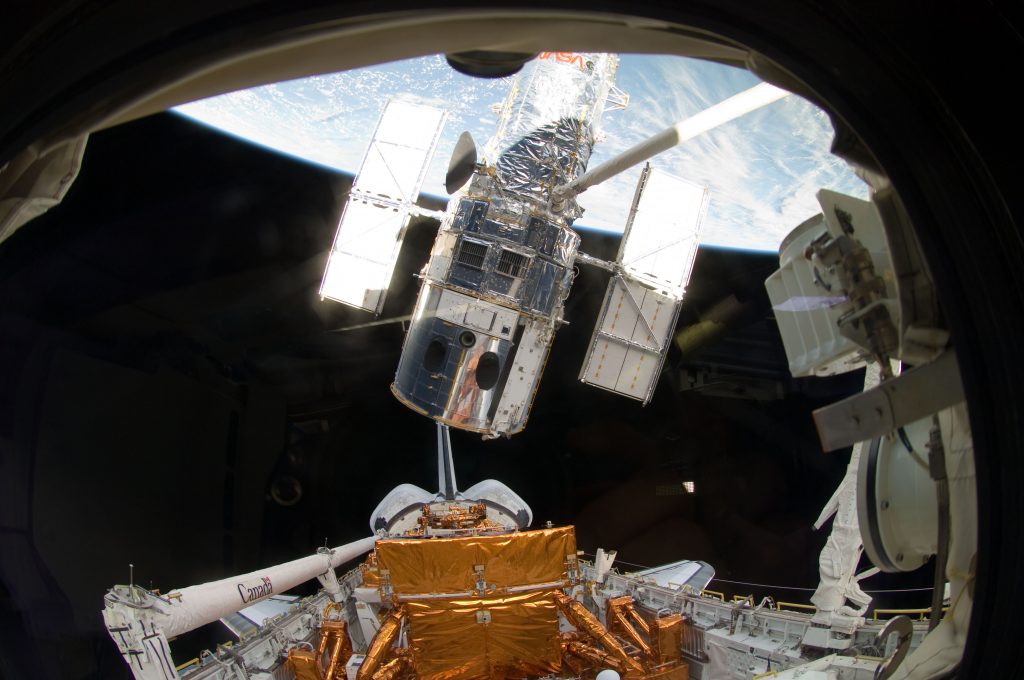- 2022-11-18
Today, we would call Sputnik 1 and Explorer 1 with masses of 83 kg and 14 kg, respectively, small satellites. These pioneering machines had few capabilities compared to their modern counterparts. By the 1970s, the most useful satellites were multi-ton vehicles carrying state-of-the-art technologies. This trend continues today for some of traditional space applications:
Meteosat-11 – Europe’s 2,000 kg weather satellites make meteorological and scientific observations over Europe and Africa from GEO.
Intelsat-39 – Intelsat’s latest-generation communications satellite, with a mass of 6,600 kg, occupies an Indian Ocean GEO.
Hubble Space Telescope – NASA and ESA’s ground-breaking astronomy project is based on a US spy satellite and has a mass of 11,110 kg.


What are Small Satellites?
Although many scientific, commercial, and even amateur satellites have been much smaller, it wasn’t until the turn of the 21st Century that the modern Small Satellite category became possible. Massing less than 500 kg, these satellites fall into six broad sub-categories:
| Small Satellite Sub-categories | Satellite Launch Mass |
| Small satellites | 180-500 kg |
| Minisatellites | 100-180 kg |
| Microsatellites | 10-100 kg |
| Nanosatellites | 1-10 kg |
| Picosatellites | 0.1-1 kg |
| Femtosatellites | 0.01-0.09 kg |
In addition to their small masses, these satellites are physically much smaller than conventional satellites. You can hold a 1 kg nanosatellite in the palm of your hand. Even the largest would be comparable to your refrigerator.
What are CubeSats?
You may have heard the term “CubeSat”. This is a specific small satellite design that can fall into the nanosatellite or the microsatellite category. Developed as an educational tool in the 1990s, the CubeSat standard let student satellite projects move quickly from concept to launch. Today’s CubeSats are more capable yet still very affordable.
A CubeSat’s modular format is based on a 10x10x10 cm frame that contains the satellite’s subsystems. Satellite designers can combine multiple cubes to form larger satellites. A 6U nanosatellite, for example, measures 10x30x20 cm. This standardization has created an ecosystem of component and subsystem suppliers that often use commercial components rather than the space industry’s expensive technologies.


Why have satellites always been so big?
With a mass measured in tons and solar panels spanning nearly 50 meters, a traditional communication satellite is enormous. Several factors drive this trend:
Capabilities – The larger the satellite, the larger the payload. One GEO communications satellite can provide radio, television, and other services to hundreds of countries.
Power – Satellites need large solar panels and batteries to power their payloads. SES-17’s solar panels generate 28 kW of electricity and span a distance greater than the height of the Ángel de la Independencia in Mexico City.
Propulsion and Positioning – Large satellites operate for decades without refueling so they must carry propellant in addition to heavy attitude control systems.
What makes Small Satellites so successful?
Small satellites take advantage of new technologies and new operating models. As a result, they can compete with large satellites and provide new services.
On the technology side, microprocessors keep getting more powerful, smaller, and more energy-efficient. Small satellites have life cycles measured in years rather than decades. Each new satellite is more capable than the last as it takes advantage of the latest technologies.
Small satellite manufacturers benefit from economies of scale to reduce their costs. Commercial-off-the-shelf technologies and standardized, modular designs reduce costs further.
The unique nature of small satellites has revolutionized the space industry to the point they dominate the population of active satellites.






